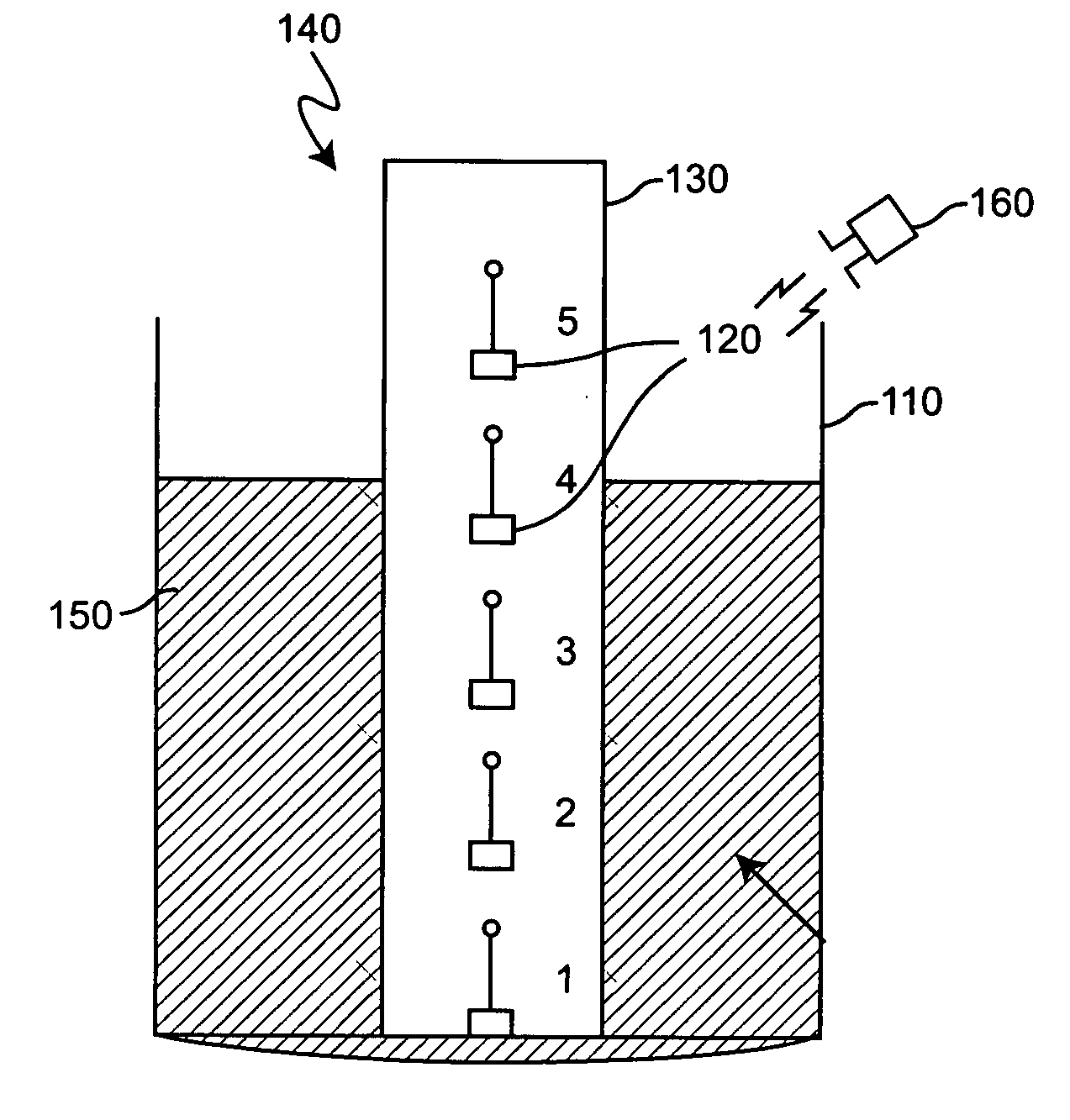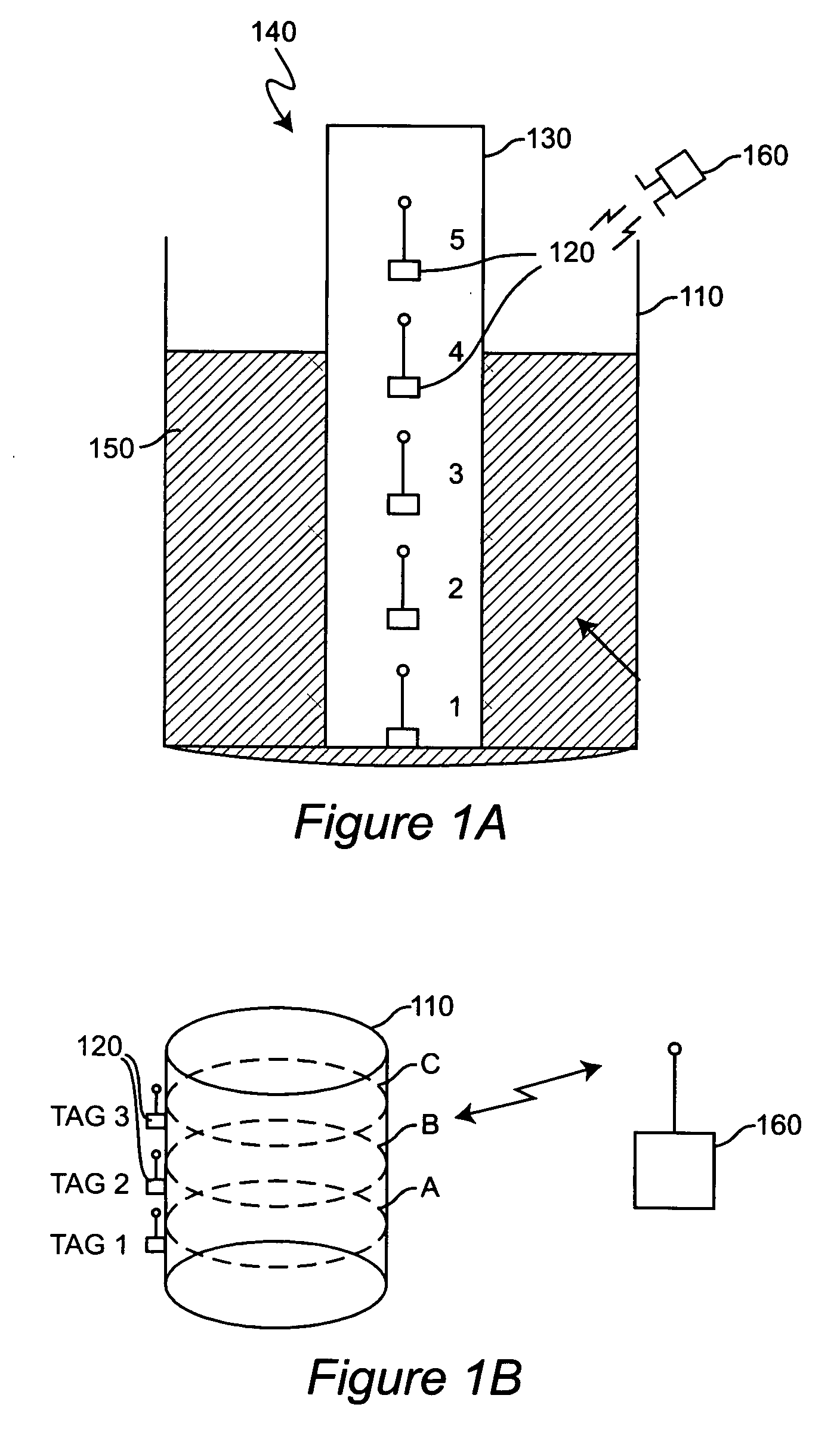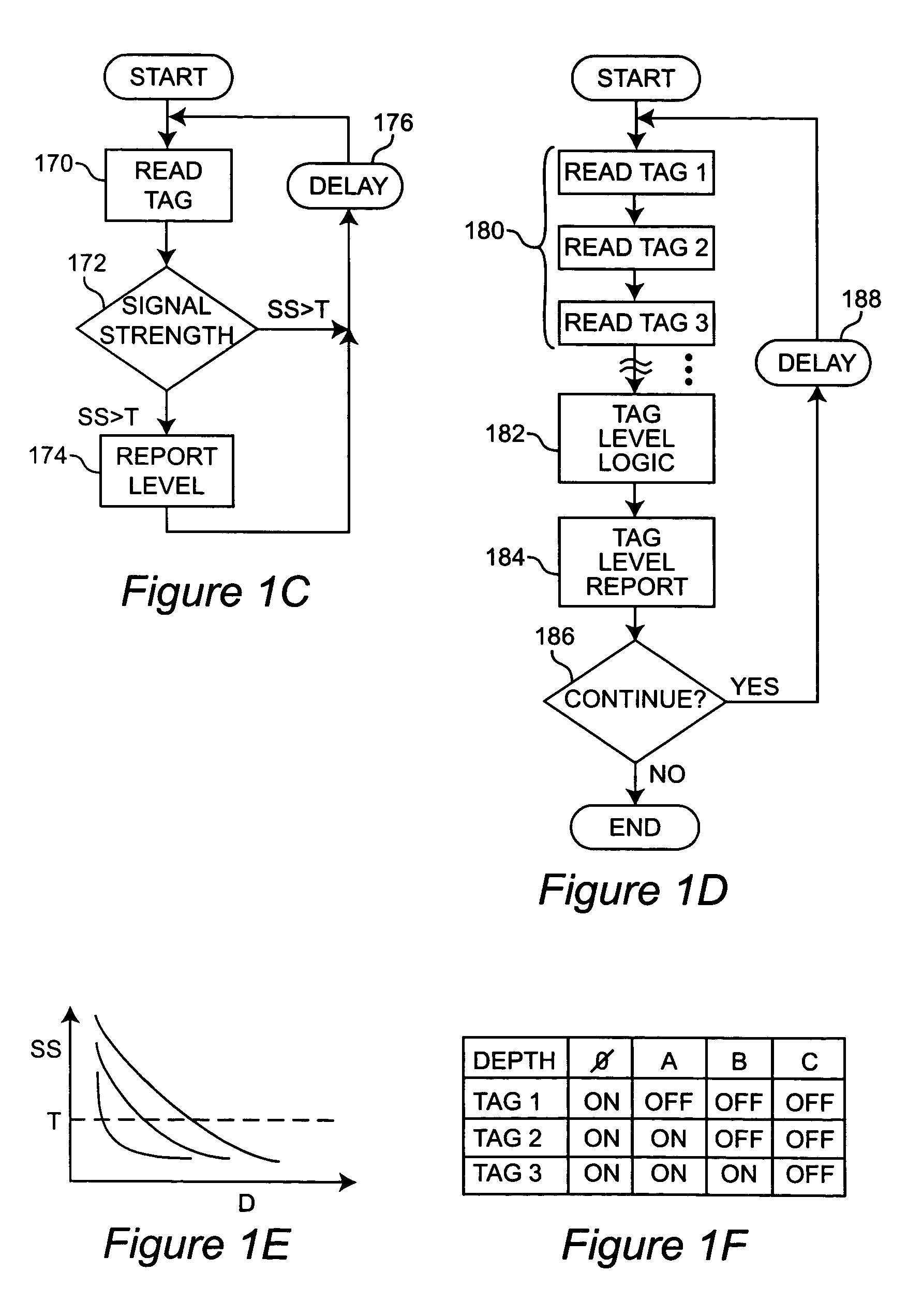Method for measuring material level in a container using RFID tags
a technology of rfid tags and container, which is applied in the field of remote measurement and telemetry, can solve the problems of not generally providing communication of measurement, fouling of adhesive materials, and high cost of mechanical and optical sensors
- Summary
- Abstract
- Description
- Claims
- Application Information
AI Technical Summary
Benefits of technology
Problems solved by technology
Method used
Image
Examples
Embodiment Construction
[0027] Referring now to the drawings, and more particularly to FIG. 1A, there is shown, in schematic cross-section, a container 110 partially filled with material in which RFID tags are used for material level measurement in accordance with the invention. RFID tags 120 are distributed at different vertical locations 1-5 within the container 110. This distribution of RFID tags 120 can be done in many ways such as attachment to the container wall, suspension along a tether or the like.
[0028] However, it is preferred to locate the RFID tags by placement in a protective sleeve 130 which is preferably rigid or exhibits a suitable degree of stiffness to provide accurate vertical location of the RFID tags in an array 140 of known geometry notwithstanding effects of buoyancy, material movement within the container and the like. For this purpose, the sleeve may be in the form of a tube or pipe of desired geometric cross-section or a tubular web which may be flattened, possibly over an inner...
PUM
 Login to View More
Login to View More Abstract
Description
Claims
Application Information
 Login to View More
Login to View More - Generate Ideas
- Intellectual Property
- Life Sciences
- Materials
- Tech Scout
- Unparalleled Data Quality
- Higher Quality Content
- 60% Fewer Hallucinations
Browse by: Latest US Patents, China's latest patents, Technical Efficacy Thesaurus, Application Domain, Technology Topic, Popular Technical Reports.
© 2025 PatSnap. All rights reserved.Legal|Privacy policy|Modern Slavery Act Transparency Statement|Sitemap|About US| Contact US: help@patsnap.com



